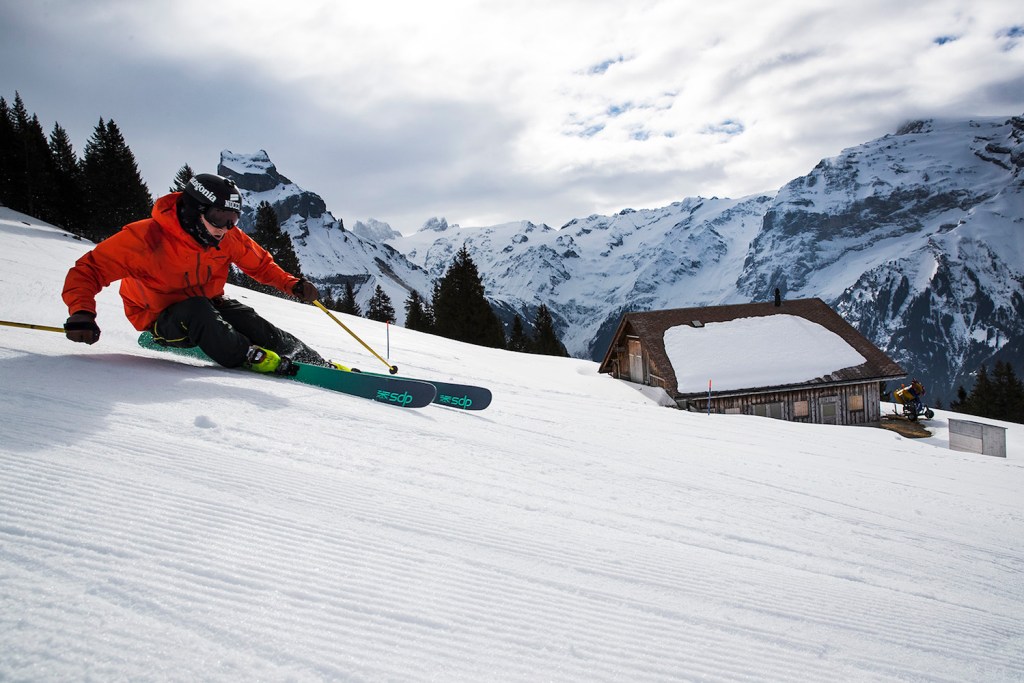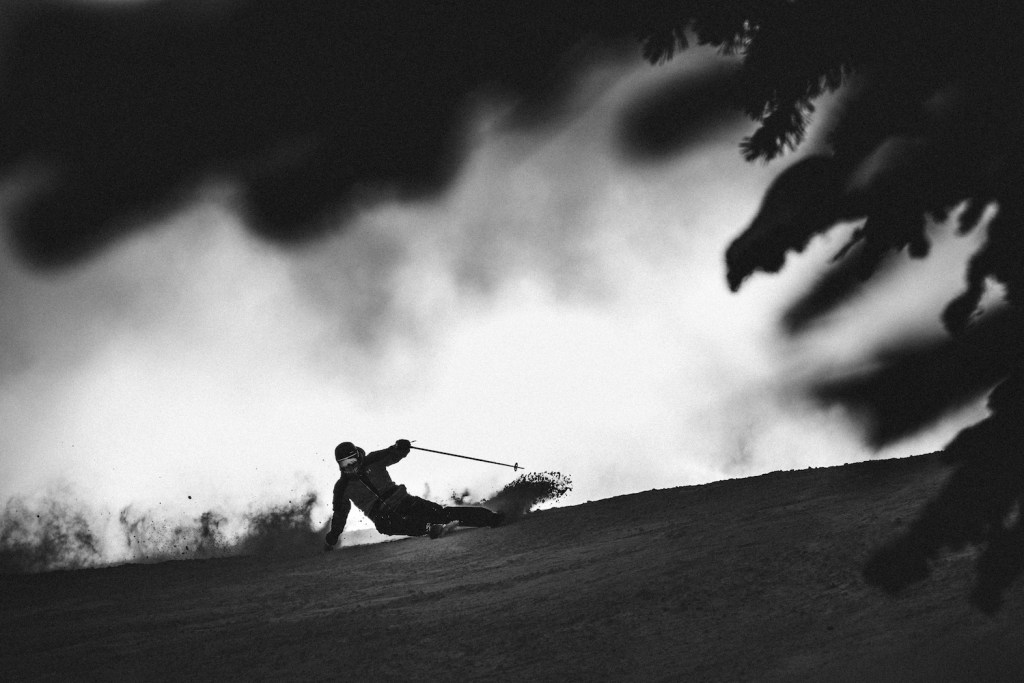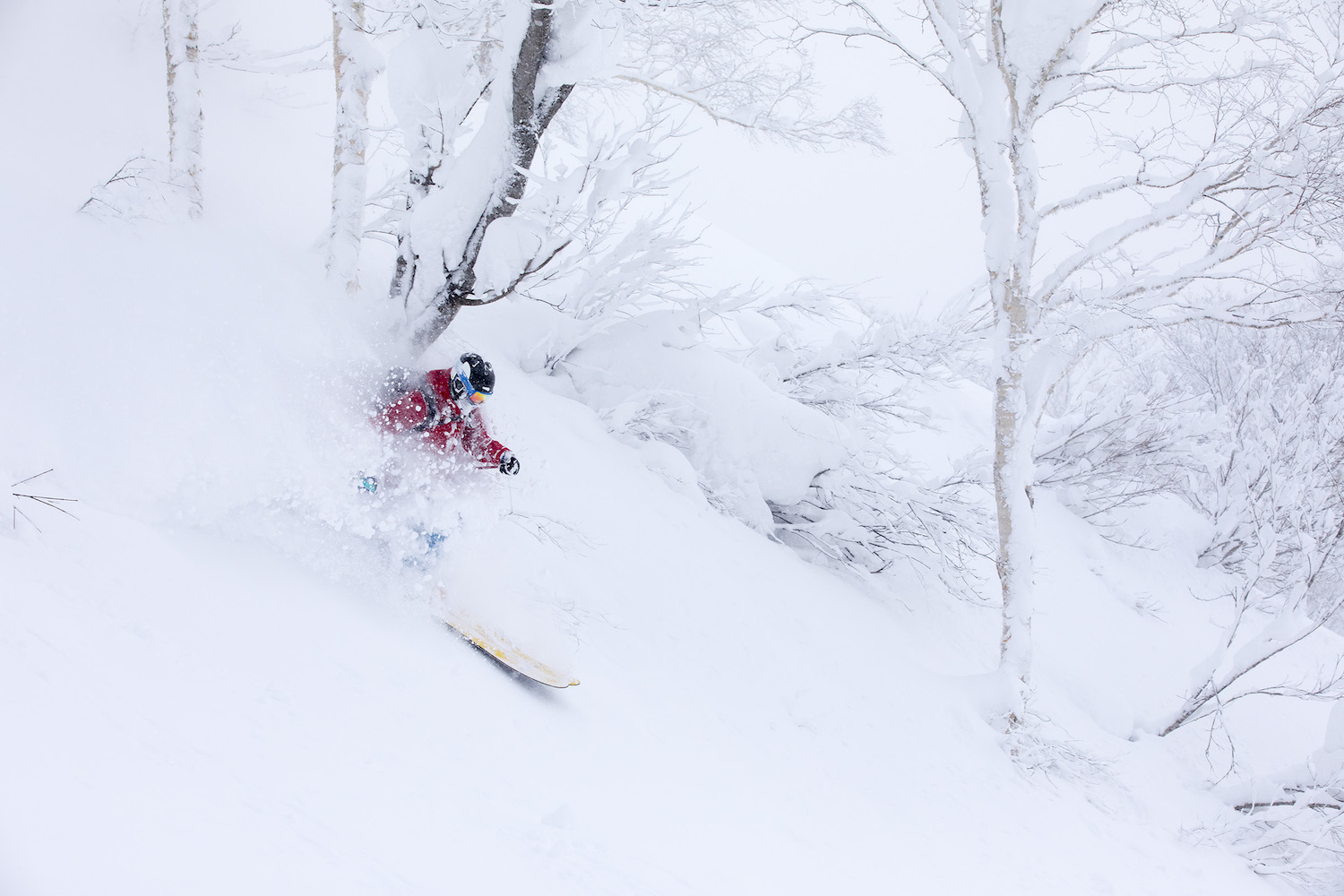Until recently, super-wide skis were deemed an essential part of a skier’s quiver, a powder-day necessity. Take Ski magazine’s 2013 review of “The 33 Fattest Men’s Skis” where one of the widest skis, the Liberty Mutant, had a width of a whopping 149mm—that’s nearly the length of a six-inch sub sandwich. But over the past few years, it seems the ski industry’s obsession with ultra-fat skis has waned. Established brands like Nordica have since discontinued their 140mm-underfoot Jah Loves.
“I think the ski industry as a whole grows and shrinks waist widths every five to 10 years. If you were to chart it out, you could watch the trends swing back and forth like a pendulum,” said Christian Avery, the national product manager for Blizzard Skis. “I think we’re on a trend where we’re getting back to narrower skis overall, as people are wanting to get back to really carving.”

DPS Skis was known for their 124mm-underfoot powder skis. Now? Their skinnier skis excel in all types of snow. (Photo Credit: Oskar Enander/DPS)
This year, walking the Outdoor Retailer showroom floor, most every ski brand was pushing skis in the 80mm–100mm waist range. In 2018, Atomic introduced a 100mm version of its popular Bent Chetler model (20mm skinnier than what was previously available), while Blizzard recently announced that next year it would be releasing an 82mm edition of its popular Brahma ski, formerly only available in an 88mm waist. So where has the girth gone?
“I think the geometry … kind of erupted a few years ago, and it was an awesome time in the exploration of shapes and how far we could go,” said Thomas Laakso, vice president of product at DPS Skis, a Utah-based brand known for its wide, powder-specific boards (see their 124mm-underfoot Lotus). “But now, we realize, it’s not purely about surface area. Now it’s about having the right rocker lines, the right taper ratios, the right construction—all of that has more effect on how a ski handles powder than anything else. If you look at our Wailer 112, it can ski pow as well as a 124 underfoot ski from a few generations ago. And you can still carve it if you need to.”
Talking with ski manufacturers, those sentiments were commonly echoed as to why skis seemed to be getting thinner—advanced construction and shaping techniques have eliminated the need for bulky powder skis while, in many places, people are starting to fall back in love with the art of the carve.
“The majority of the time people are skiing, they’re skiing on hardpack or groomed snow with occasional forays off-piste and into the deeper stuff,” said Dan Chalfant, founder and CEO of Liberty Skis. “The emphasis now is just on making skis that can carve and be aggressive in a wide range of conditions, which will be better for the majority of customers.”

Whether you want to carve groomers or slay powder, Nordica has a mid-fat ski for you. (Photo Credit: Evan Williams/Nordica)
Another reason industry insiders point to the lack of marketing push behind huge powder skis in recent years: the weather.
“A lot of what we’ve seen over the last few years has been unpredictable snow and dry cycles in December,” said Sam Beck, the director of marketing for Nordica. “People were getting caught in these dry cycles, and while a bunch of them might have bought a, say, 108mm underfoot ski a few years ago, now they’re suddenly looking in that 88mm–93mm range, especially on the East Coast.”
In keeping with the narrower trend, Nordica announced that next season it will be introducing an 88mm waist version of its popular Enforcer model—the narrowest version of the Enforcer yet, which currently comes in 115mm, 110mm, 100mm and 93mm versions. “Now people are getting onto these skis really meant for carving and going, ‘Wow, I forgot how fun these can be,’” Beck said.
So are fat skis totally done? Hardly. While Avery, Chalfant and others agree that we’ll likely see the industry swing back in the direction of making fatter skis again in the future, they also say it’s unlikely we’ll see the rise of 140mm-underfoot skis again, because ultimately, there’s no need for them. Ski-shaping techniques, they say, have gotten to the point where you can get skis that can carve while still ripping powder and not feel like a pair of two-by-fours strapped to your feet.
“I feel like the industry has found the sweet spot, which is somewhere in the 85mm–105mm underfoot range,” said Josh Cohen, product manager for Faction Skis. “More people ski on-piste than off-piste. Companies are tightening their belts and trying to make money, and one of the ways they’re doing that is by getting rid of models that don’t make money.” Cohen adds, “Financially, selling fat skis doesn’t make money for brands, so brands are looking to hit that sweet spot in the middle. We all want to make great skis, but you also need to make skis that appeal to and serve the mass market.”
